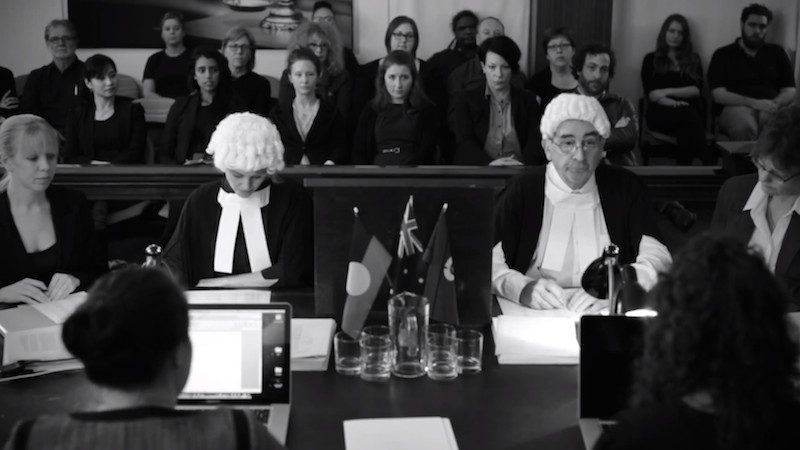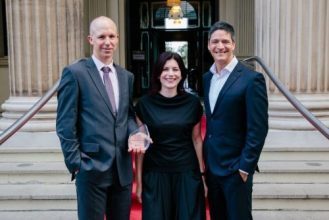Domestic and family violence is a pervasive social problem that can have significant, long-term effects for a survivor’s physical and mental health (Queensland Government, 2015). In Australia in 2012, it was estimated that 17.0% of all women and 5.3% of all men had experienced an incident of domestic violence at least once in their life since the age of fifteen (ABS, 2012). Due to the tireless work of activists, policy makers, victim/survivors and their families in Australia over the past few years, we have seen awareness of the issue gain momentum as an issue that desperately needs to be addressed at a social and political level.
As domestic and family violence is a crime that is predominately committed by male perpetrators against female victims in cis gender heterosexual relationships (Peterson & Panfil, 2014), historically, it makes sense that conversations and awareness raising campaigns have focused predominantly on violence occurring in cis-gender heterosexual relationships. However, there is growing body of research to suggest that this kind of abuse is occurring at similar rates in LGBTQI+ relationships (Pitts et al., 2006), and around 1 in 3 LGBTI people have reported experiencing violence from a partner, ex-partner or family member (ACON, 2018).
Identifying Domestic and Family Violence in LGBTQI Relationships
Although there are many similarities with regards to the type of violence perpetrated in LBGTQI and cisgender heterosexual relationships, it is important to be aware that there are a number of aspects of domestic and family violence that are unique to LGBTQI relationships (ACON, 2018; Our Watch, 2017). For example, an abuser may engage in the following behaviours:
- Threaten to ‘out’ the person to friends, family and/or co-workers. This can include ‘outing’ someone’s sexuality, gender, HIV, or intersex status.
- Refuse to use someone’s correct pronouns, deliberately mis-gender them, and/or ‘deadname’ them (which is when you refer to a person who is transgender or non-binary by their non-affirmed name).
- Control someone’s medications, and/or their access to gender transition related healthcare, or pressure them to conform to sex or gender “norms”.
- Direct homophobic/transphobic/biphobic slurs and abuse towards the person.
- Minimise and/or deny the person’s experience by telling them that domestic and family violence can’t happen in LGBTQI relationships and/or that if they seek support, the services will be homophobic/transphobic/biphobic.
- Threaten to cut the person off from and/or disparage them to their LGBTQI social group/community.
Barriers to Help Seeking
Across the board, reporting rates for domestic and family violence tend to be relatively low (Grech & Burgess, 2011). This is, in part due to a number of societal attitudes and misconceptions about domestic and family violence that serve to blame the victim more generally (Yamawaki et al., 2012). These myths often include statements and/or beliefs such as, “there are two sides to every story” and/or “If the victim/survivor doesn’t like the abuse, they can just leave.” However, for those experiencing violence in LGBTQI relationships, there are a number of beliefs and stereotypes that can further compound their experience (Chan, 2005), making it harder to identify the abuse, and to seek help. For example;
- Societal stigma surrounding LGBTQI relationships leading to:
- A fear of lack of understanding, minimisation and/or discrimination from police and service providers.
- Beliefs that the abuse is part of, or caused by someone’s gender and/or sexual identity.
- Fear that speaking out will reinforce prejudicial beliefs about LGBTQI relationships.
- Gender-role based beliefs that minimise and/or deny the violence, such as “Women aren’t, or can’t be violent” or that violence between men is “Just boys being boys”.
- Fear and confusion around differing legal rights regarding children and assets.
- A lack of mainstream services that are aware of, and address the specific needs of LGBTQI people, such as support programs for female perpetrators, safe housing services for male victims and their children, as well as transgender and intersex inclusive services.
What can you do if you, or someone you know is experiencing domestic and family violence?
If it is an emergency, always call Triple Zero (000). If it isn’t urgent, you can call the Police Assistance Line 131 444, or make and anonymous call to Crime Stoppers on 1800 333 000.
Although the majority of domestic and family violence services out there cater a cisgender heterosexual model of domestic and family violence at the moment, there is a growing awareness and push for services to cater to the specific needs of LGBTQI folk. As such, many police services around Australia have Domestic Violence Liaison Officers, who have specialist training in working with people who are experiencing domestic and family violence, as well as Gay and Lesbian Liaison Officers, who have been specially trained to address LGBTQI issues.
If a friend discloses to you that they are experiencing domestic and family violence, and it is not an emergency, it is important to keep in mind the following:
- Although this initial discussion can be difficult, your friend or family member needs your support.
- Believe what they tell you. People experiencing abuse are usually more likely to downplay the abuse, rather than exaggerate it.
- Listen to them without judgement or criticism.
- Reassure them that you will stand by them, and be ready to talk or help, when they ask.
- Avoid telling them what to do outright, instead, help them to explore the options that are available to them, and the ones that they feel most comfortable with. Some support services that might be suitable are;
- The 1800 RESPECT Helpline provides information and support for anyone in Australia who may be experiencing domestic and family violence. They are available 24 hours a day, 7 days a week on 1800 737 732. Their website also has information specifically for LGBTIQ folk.
- QLIFE offers free counselling for LGBTI people and their families via phone or the internet from 3pm to 12am every day; 1800 184 527.
- Finally, remain their friend even if they continue to stay in the relationship. Leaving an abusive relationship can be really difficult, and sometimes takes people a number of tries. Also, it’s important to keep in mind that some people may not want to leave the relationship, they may want their partner to seek help, and for the violence to stop. At the same time, it’s ok to time remind them that everyone has the right to live free from violence.
Find out more:
http://sayitoutloud.org.au/relationships/abusive-relationships/are-you-being-abused/
https://www.acon.org.au/what-we-are-here-for/domestic-family-violence/
http://www.anothercloset.com.au/
References:
ACON (2018). https://www.acon.org.au/
Australian Bureau of Statistics [ABS]. (2012). Personal Safety Survey 2012 (cat. no. 4906.0). Retrieved from: http://www.abs.gov.au
Chan, C. (2005). Domestic violence in gay and lesbian relationships. Australian Domestic and Family Violence Clearinghouse Topic Paper.
Grech, K., & Burgess, M. (2011). Trends and patterns in domestic violence assaults: 2001 to 2010. Sydney: NSW Bureau of Crime Statistics and Research.
Our Watch. (2017). An Analysis of Existing Research: Primary Prevention of Family Violence Against people from LGBTI Communities.
Peterson, D., & Panfil, V. R. (2014). Handbook of LGBT communities, crime, and justice (1; 2014 ed.). New York: Springer. doi:10.1007/978-1-4614-9188-0
Pitts, M., Mitchell, A., Smith, A., & Patel, S. (2006). Private Lives: A report on the health and wellbeing of GLBTI Australians.
Queensland Government. (2015). ‘Not Now, Not Ever’ – Putting an End to Domestic and Family Violence in Queensland. Retrieved from: http://www.qld.gov.au/community/getting-support-health-social-issue/dfv-read-
Vickers, L. (1996). The second closet: domestic violence in lesbian and gay relationships: A Western Australian perspective. Murdoch University Electronic Journal of Law, 3(4), 11-26.
Yamawaki, N., Ochoa-Shipp, M., Pulsipher, C., Harlos, A., & Swindler, S. (2012). Perceptions of domestic violence: The effects of domestic violence myths, victim’s relationship with her abuser, and the decision to return to her abuser. Journal of Interpersonal Violence, 27(16), 3195-3212.



